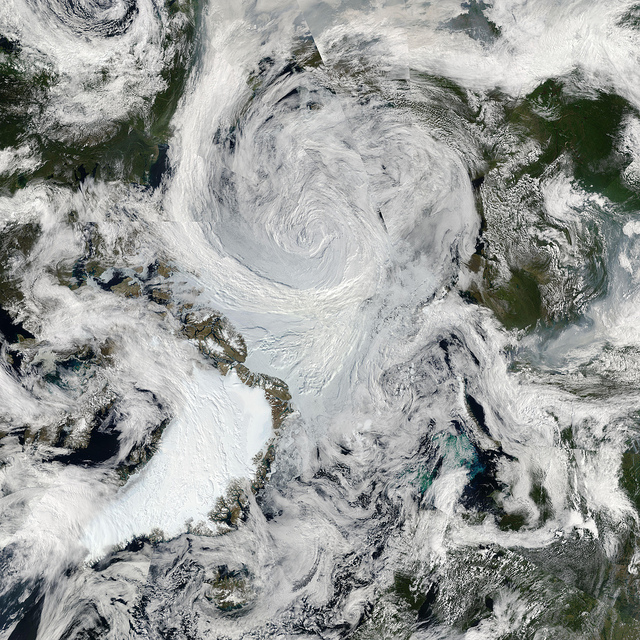 |
| image from arctische pinguin - click to enlarge |
 |
| image from arctische pinguin - click to enlarge |
In conclusion, it looks like there will be no sea ice from August 2015 through to October 2015, while a further three months look set to reach zero in 2017, 2018 and 2019 (respectively July, November and June). Before the start of the year 2020, in other words, there will be zero sea ice for the six months from June through to November.
Actually, events may unfold even more rapidly. As the ice gets thinner, it becomes more prone to break up if there are storms. At the same time, the frequency and intensity of storms looks set to increase as temperatures rise and as there will be more open water in the Arctic Ocean.
Above photo features Peter Wadhams, professor of Ocean Physics, and Head of the Polar Ocean Physics Group in the Department of Applied Mathematics and Theoretical Physics, University of Cambridge. Professor Wadhams has been measuring the sea ice in the Arctic for the 40 years, getting underneath the ice with the assistance of submarines, collecting ice thickness data and monitoring the thinning of the ice. This enabled 1970s data and 1980s data to be compared, which showed that the ice had thinned by about 15%. Satellite measurements only started in 1979.
Thinning of the ice is only one of the problems. "The next stage will be a collapse," Professor Wadhams warns, "where the winter growth is more than offset by the summer melt. If we look at the volume of ice that is present in the summer, the trend is so rapidly downwards that this collapse might happen within three or four years."
In fact, the thinner the sea ice gets, the more likely an early collapse is to occur. It is accepted science that global warming will increase the intensity of extreme weather events, so more heavy winds and more intense storms can be expected to increasingly break up the remaining ice, both mechanically and by enhancing ocean heat transfer to the under-ice surface.
Recent events in the Arctic underline this warning. A huge cyclone battered the sea ice early August 2012. The image below, from The Cryosphere Today, shows a retreat in sea ice area to 3.09958 million km2 on the 222nd day of 2012, down from 3.91533 million km2 on the 212th day of 2012, i.e. 815,750 km2 less in ten days. Or, more than one-fifth less in just ten days.
 |
| Image from The Cryosphere Today - click to enlarge |





